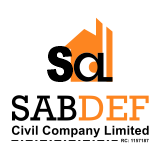This shall be carried out prior to commencement of remediation works. The results of this exercise would assist in making decisions bothering on the extent of contamination and need for groundwater monitoring.
Using the sketched site assessment map, large sites shall be subdivided into distinct Areas of Contamination (AOC) to assist in site delineation and remediation planning. An AOC is defined as a separate area of contamination within a site that is physically separate and distinct from other AOCs. These AOCs should be named logically i.e. ROW, Third-party Land, Borrow pits, etc.
AOCs shall be divided further into smaller subsections based on the degree of visual contamination observed. In order to ensure consistency, these subsections or zones shall be categorized as:
- High: Oil covering 100% of the surface soil. The colour is matt black. There is normally no vegetation in this area.
- Medium: Oil covering between 75-100% of the surface soil. The colour is dull black. Re-vegetation would have commenced in this area.
- Low: Oil covering 50-75% of the surface soil. There may be patches of re-vegetation, some of them significant.
Once the entire site has been visually delineated, a sample is taken in each area (section). This should be sent to the laboratory for analysis of nutrients (Ammonium, Nitrate, Nitrite and Phosphorus) and pollution indicators.
Each sub-section of the site shall have a vertical delineation carried out on it. This will be achieved by drilling 100cm boreholes using a graduated stainless steel hand auger. Soil samples will be collected at 0-30cm, 3060cm and 60-100cm for laboratory analysis.
To ensure accurate delineation of each AOC, the area immediately outside the perimeter of the AOC shall be delineated by both visual lateral delineation and sampling vertical delineation. Once the entire site has been delineated, a sample is taken in each area (section).


